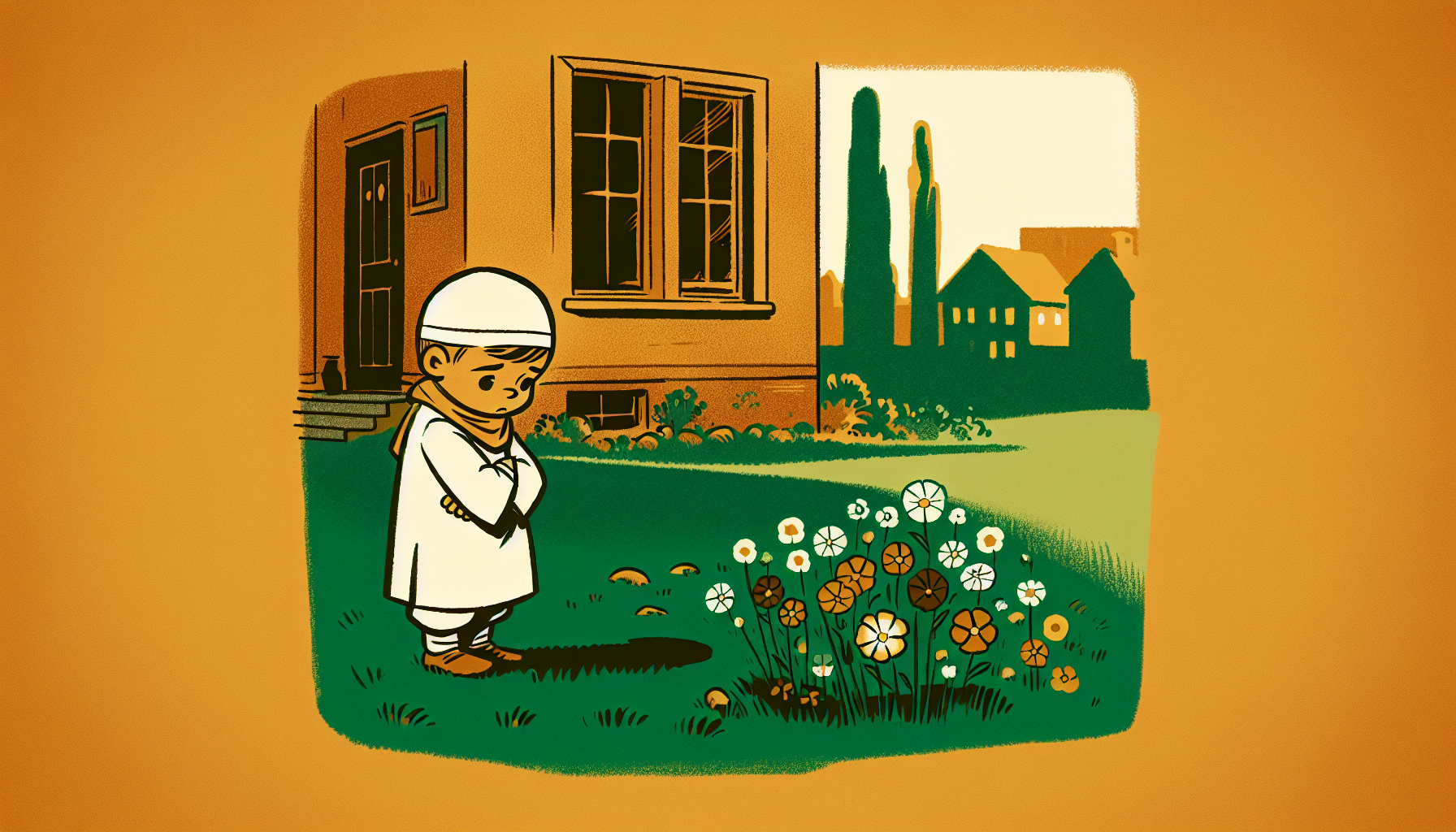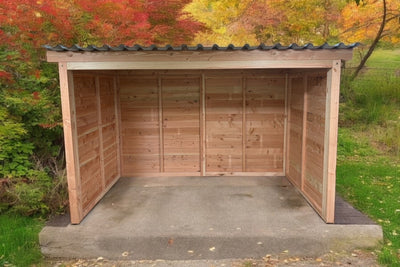Creating a flower meadow: how to transform your lawn into a biotope
For many households, the classic green lawn is simply part of the garden, but more and more people are asking themselves: is this area really making the most of our family? If you want to create a flower meadow, you can create more nature, less maintenance and exciting experiences for children on the same area. A species-rich meadow brings back color, humming life and a piece of original landscape - in keeping with the climate and soil in this country. This guide shows you step by step how to make the switch: from legal clarification and planning to maintenance throughout the year. You will learn which seed mixtures are suitable, how to convert the lawn into a flower meadow and how to create a safe, child-friendly garden. In just a few months, your outdoor space will become a robust biotope with nectar plants, butterflies and wild bees - and a natural play and learning area on your doorstep.
Why should families convert their lawn into a flower meadow?

The benefits of a flower meadow for children and the environment
A short-cut lawn looks neat, but offers little in ecological terms. Frequent mowing, fertilizing and watering costs time, money and resources. If you want to create a flower meadow, you can promote a living biotope with flowers from spring to fall on the same area.
Children observe pollination, discover wild bees and butterflies and learn about natural cycles. Everyday adventures such as counting ladybugs or perceiving scents create an emotional closeness to nature. A meadow is therefore both a beautiful eye-catcher and a natural learning environment.
Promoting biodiversity and a habitat for insects
With a diverse area of flowers, you are actually strengthening biodiversity: native wild plants provide nectar and pollen for butterflies, bees, bumblebees and beetles. In times when food is scarce due to monocultures and sealed surfaces, every square meter counts.
By cutting back lawn grasses and sowing species appropriate to the location, you create a stepping stone biotope through which animals and plants can spread. This improves the ecological balance of your surroundings and makes the decision to create a flower meadow doubly worthwhile.
What legal and safety aspects need to be considered?
Garden and neighbors' rights in Switzerland
In residential areas, rules apply to boundary distances, sight zones and communal areas. If you want to create a flower meadow, check in advance with the local authority or administration whether there are local regulations on vegetation height or maintenance intervals. This is particularly important along roads, paths and driveways.
Many municipalities welcome near-natural gardens as long as no invasive neophytes are encouraged and visibility is not obstructed. In practice, one or two cuts per year and clean paths and edges are sufficient. Useful information on biodiversity in urban areas is available in German from the Federal Office for the Environment.
Child safety and sources of danger in the garden
A near-natural meadow reduces the use of pesticides and noisy mowers. However, if you have small children, make sure you have clear paths, a good overview and suitable plants. This keeps the flower meadow safe for children and provides lasting enjoyment.
- Avoid poisonous plants: Do not sow foxglove, monkshood or autumn crocus and remove them if in doubt.
- Keep garden paths open: Narrow paths or stepping stones make it easier to play and protect the vegetation.
- Ensure accessibility: solid gravel paths or slabs help baby carriages and bicycles.
Higher vegetation can harbor ticks. Check your body after playing and choose closed clothing in affected areas. The Federal Office of Public Health provides up-to-date health information.
How to plan the conversion from lawn to flower meadow?
Space requirements and design options for family gardens
Every meadow is different, even small areas of 3-5 m² have a noticeable effect. If you want to create a flower meadow, choose sunny, nutrient-poor areas and avoid heavily shaded or permanently wet areas.
A modular structure is ideal for families. This preserves play areas and gives the garden more structure and experience value. This also makes the transition easier when you convert the lawn into a flower meadow.
- A central meadow area with high biodiversity
- A wildflower path or barefoot path with stepping stones
- An observation point with a seat or a small insect hotel
Edges along fences are suitable for niche habitats. Combine the meadow with lawn islands or a vegetable patch for a diverse, resilient garden.
Selecting the right types of flowers and plants for the region
Choose native wild plants that tolerate the climate and soil well. If you want to create a flower meadow, make sure you use regional seeds so that insects can find the best food and the plants can survive without fertilizer.
Recommended wildflower species for family gardens
:- Meadow daisy (Leucanthemum vulgare)
- Rattle pot (Rhinanthus minor, weakens lawn grasses)
- Meadow sage (Salvia pratensis)
- Horn clover (Lotus corniculatus)
- Red meadow clover (Trifolium pratense)
- Yarrow (Achillea millefolium)
- Common viper's bugloss (Echium vulgare)
InfoFlora provides a helpful overview of suitable species and locations. Regional suppliers such as Hauenstein, UFA-Samen or Floretia offer suitable mixtures for extensive meadows and various altitudes.
What steps are necessary for successful implementation?
Preparing the lawn: soil cultivation methods
The biggest hurdle is often the dense carpet of grass. If you want to create a flower meadow, first create open patches of ground so that light germinators can take off. This lays the foundation for biodiversity.
- 1. remove turf: mechanically with a spade or tiller, or gradually starve out and cover with foil for 6-8 weeks.
- 2. roughen the topsoil: Loosen to a depth of 3-5 cm with a rake. Do not incorporate any fertilizer or compost; low-nutrient soil is ideal.
- 3. fine crumbled surface: not too firm and not too loose so that the seed adheres well.
The best sowing time is in spring (April-May) or late summer/autumn (August-October). In Switzerland, these time windows offer a favorable germination climate with reliable moisture.
Seed selection: Selecting and buying native wildflower mixtures
Look for 100% native species without ornamental or problem plants. If you want to create a flower meadow, choose fresh seed and consider light sprouts that are not covered with soil.
- UFA native flower meadow - regional premium quality
- Wildi - Flower meadow for extensive locations from Hauenstein
- Floretia special mixture for children & bees
Spread 1-3 g/m² evenly, press the seed down lightly and water carefully. In the first Keep the soil moist for weeks and protect the seedlings from trampling. This ensures that the Swiss flower meadow sowing season is a success.
How do you look after a flower meadow properly and what common mistakes should be avoided?
Care tips for promoting a robust flower meadow
A meadow is low-maintenance, but not maintenance-free. If you want to create a flower meadow, you should follow a clear maintenance plan with two cuts per year. This stabilizes the species diversity in the long term.
- Two cuts per year: main cut in June, maintenance cut in September. If possible, use a bar mower or scythe, do not mulch.
- Remove mown material: Allow to dry for two days and remove completely so that the site remains nutrient-poor.
- No fertilizer: Wildflowers prefer lean conditions and then prevail over grasses.
After two to three years, a stable balance with perennial flowers will be established. During dry periods, water moderately and keep paths clear so that the area can recover.
Costs and budgeting: Realistic assessment of conversion costs
Many people ask about the costs of conversion. If you want to create a flower meadow, you mainly invest in seeds, some tools and time. In the medium term, effort and watering costs will fall significantly.
- Seed for 10 m²: around CHF 30-60 depending on the mixture and quality
- Tilling the soil yourself: CHF 0; by a specialist company around CHF 20-40/m²
- Tools: rakes, spades, rollers - often available or cheap to borrow
- Savings: less fertilizer, less irrigation, less mowing required
The added value for nature and recreation is priceless. The garden becomes a long-lasting, near-natural system with high resilience.
Conclusion: Creating a nature experience for the whole family
A species-rich meadow instead of a monotonous lawn brings biodiversity, learning moments and tranquillity to everyday life. If you want to create a flower meadow, use regional species, clarify local rules and follow a simple maintenance plan. This creates a living garden space for people and animals.
Start now with a small test bed and expand step by step. Discover suitable mixtures, plan the implementation and experience how your garden blossoms. Start your garden project now and discover more tips!


